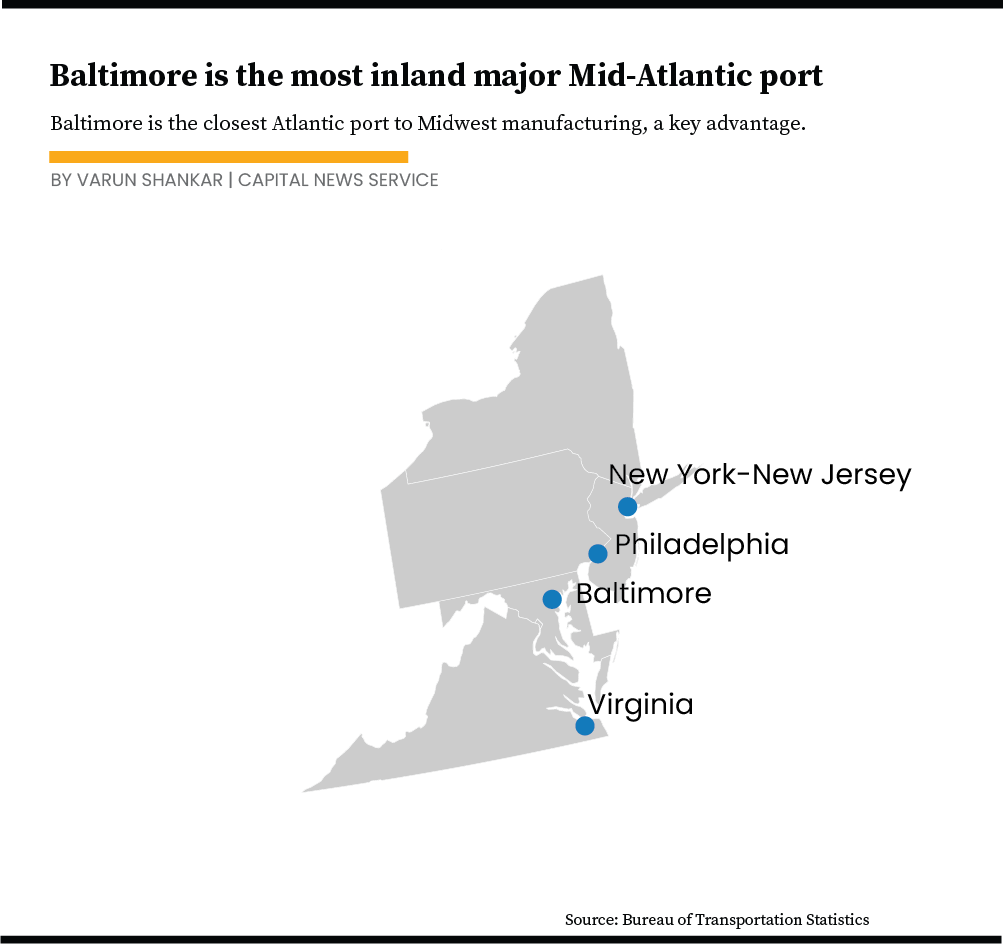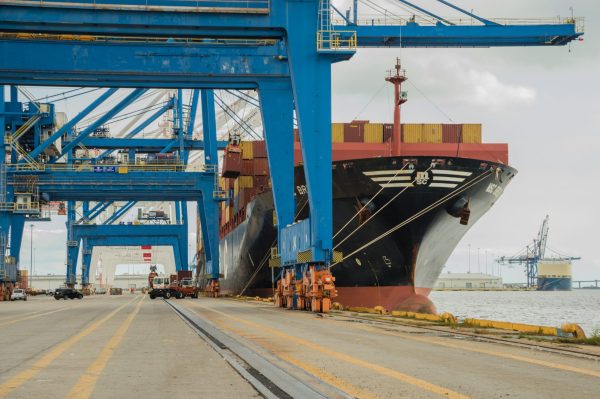The amount of cargo coming through the Port of Baltimore’s six public terminals has grown dramatically in the last 25 years, according to data from the Maryland Port Administration (MPA).
The rises are evident across various types of cargo; container tons increased by over 92 percent from 1998 to 2022, according to the MPA data. Over the same period, automotive cargo went up by a whopping 196 percent and roll on/roll off cargo — farm and construction machinery — went up by more than 113 percent.
MPA Director of Communications Richard Scher said in an email the port’s prime location and a “strategic business plan” have driven the growth.
The plan “focused on pairing our geographical and logistical strengths with developing a diverse portfolio of cargo commodities,” Scher said in the email.
The Port of Baltimore was established in the 17th century and soon became an important center of trade, per the Maryland State Archives. The port has grown considerably since, starting with the federal River and Harbor Act of 1852 and continuing into the mid-2010s.
The Port of Baltimore ranked 17th in the country in total tonnage entering and leaving the port in 2021, according to the Bureau of Transportation Statistics’ 2024 report to Congress.
It ranked 10th in 2021 in dry bulk tonnage handled, according to the report. Dry bulk refers to raw materials such as iron ore, coal, grain and more.
Container Tons have increased dramatically
In 1998, the Port of Baltimore’s public terminals handled about 4.3 million container tons. Twenty-four years later, it handled more than 8.3 million tons, per the MPA data
In 2021, the port ranked 15th among the nation’s ports in container tons handled, per the Bureau of Transportation.
The Maryland Port Administration’s primary container facility is the Seagirt Marine Terminal, a public-private partnership with Ports America Chesapeake, according to Scher’s email.
The partnership was established in 2010. The organization told CNBC in 2023 that $550 million in densification upgrades had gone into the terminal since its establishment.
“Baltimore is able to accommodate some of the world’s largest ships because of its 50-foot-deep channel and its supersized, Neo-Panamax cranes,” Scher said in the email.
Neo-Panamax cranes are bigger and stronger than their predecessors, helping them deal with the larger ships that can now pass through the Panama Canal,
Auto and Machinery Increases
The Port of Baltimore’s public terminals now deal with substantially more automotive shipping than it did before, per the MPA data.
That has increased the amount of roll on/roll off cargo it handles, including dump trucks, harvesters, rollers and more, per Scher. Among East Coast ports, Baltimore is most inland, keeping it closer to Midwest markets and manufacturers. Scher said that’s helped the port grow.

“Baltimore has led the nation’s ports in handling autos for 13 consecutive years and machinery for more than 20 years,” he said in the email.
2023 saw a record 1.3 million tons of roll on/roll off cargo come through Baltimore’s piers, he added.
Scher credited those impressive figures to the port’s Quality Cargo Handling Action Team (QCHAT). Manufacturers, labor, processors, terminal operators, the port and more invested parties meet monthly, he said, to look at the previous month’s performance.
“Handling cargo with meticulous care is at the very center of our quality team,” he said in the email. “Any areas of improvement are quickly and easily addressed with all key players present at these meetings.”


You must be logged in to post a comment.